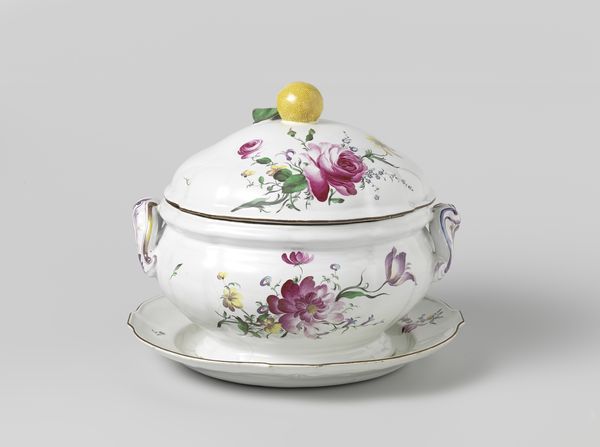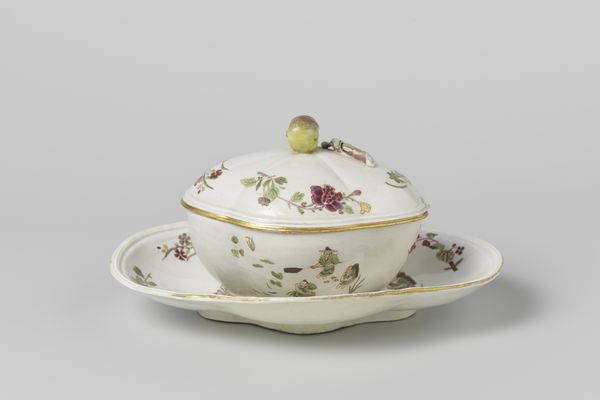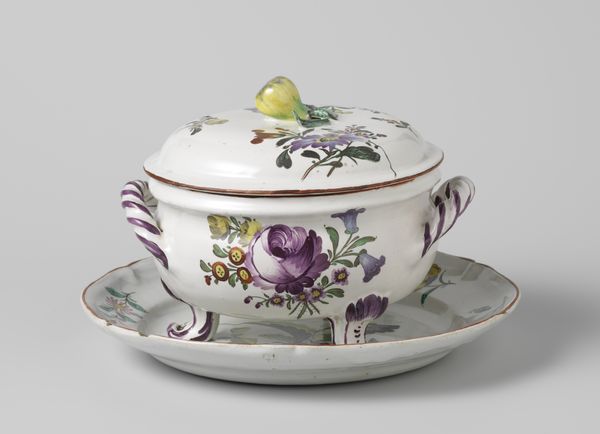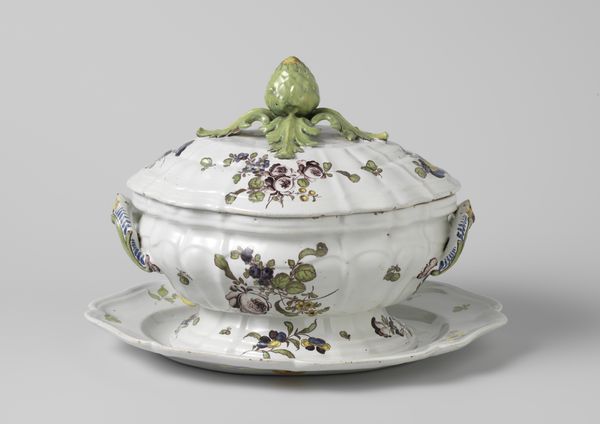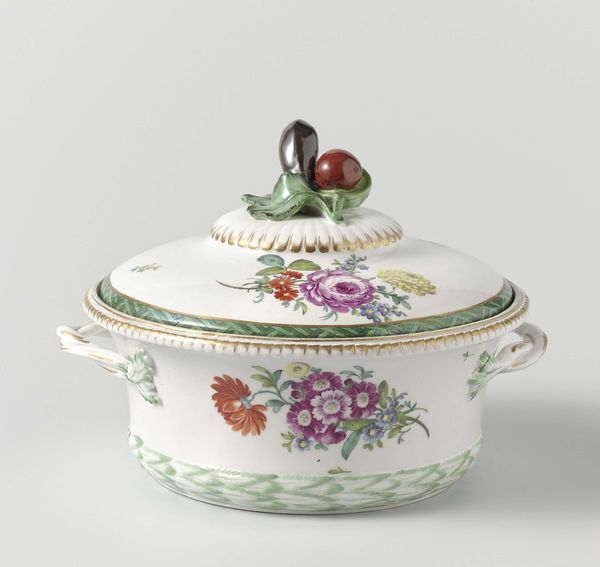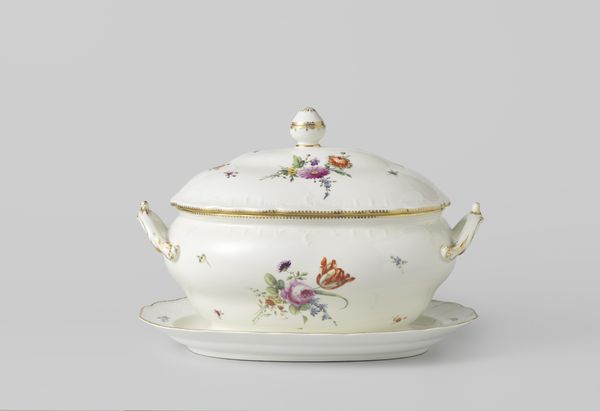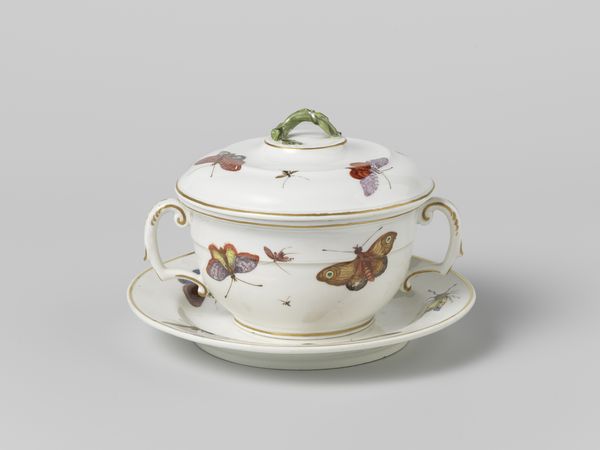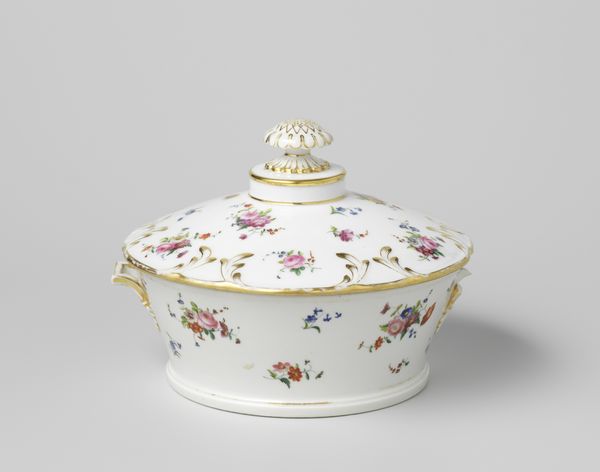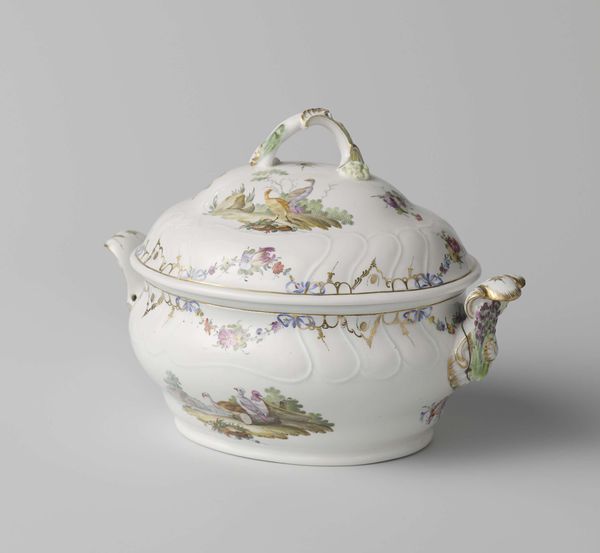
Terrine met deksel en onderschotel, beschilderd met strooimotief c. 1760 - 1770
0:00
0:00
painting, ceramic, earthenware
#
painting
#
ceramic
#
earthenware
#
decorative-art
#
rococo
Copyright: Rijks Museum: Open Domain
Editor: This lovely Terrine with Lid and Plate, made of earthenware and painted ceramic around 1760-1770 by the Ludwigsburg Porcelain Factory, exudes such a delicate, Rococo charm. The scattered floral motif is very pretty. What symbolism do you see within these painted elements? Curator: Ah, an excellent question. Rococo, remember, celebrated ornamentation and natural forms. This "strooimotief," as it's called, mimics a garden, a carefully constructed wilderness. But consider: are these botanicals painted realistically? No. They represent an ideal of nature, controlled and beautiful, reflecting aristocratic desires to dominate even the natural world. Editor: So, the very act of depicting these flowers becomes a symbol of power? Curator: Precisely. The rose, of course, often stands for love and beauty, but even its specific coloring matters. Notice how the pastel palette—the blues, yellows and purples-- soft, speaks to a specific sense of refined taste, of avoiding anything too garish or bold. What might the lemon on top suggest? Editor: Hmm, it adds a pop of vibrant colour, maybe a zest for life, or even luxury given lemons were less common then? Curator: Yes, and the lemon can symbolize freshness and purification. Combining all these symbols elevates the dining experience, turning every meal into a statement about wealth, taste, and the control of nature. Think about the continuity of representing the natural world, a constant reflection of our environment. Editor: This has given me so much to think about regarding Rococo's complexities. Thank you! Curator: It's a pleasure. There is always more to unearth when viewing our relationship to the history of symbols.
Comments
No comments
Be the first to comment and join the conversation on the ultimate creative platform.
